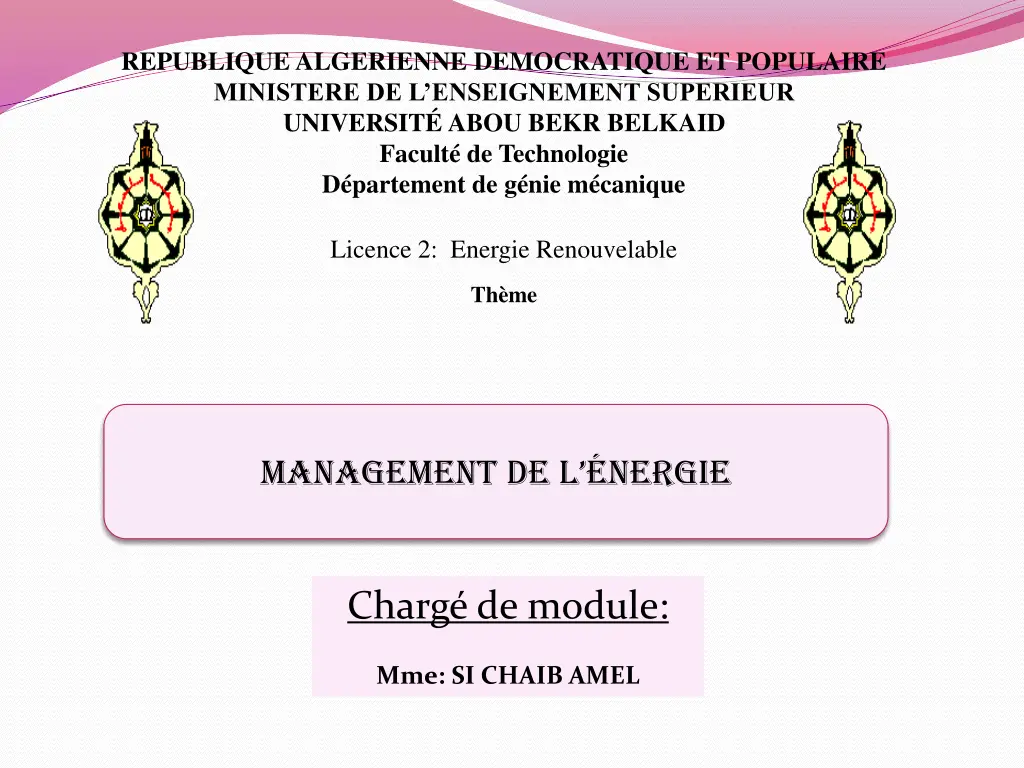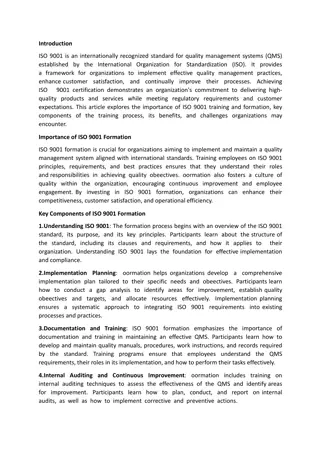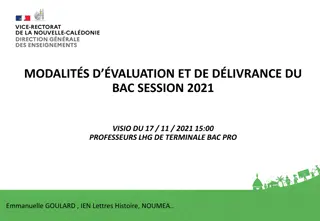
Effective Lighting Strategies for Livestock Houses
Ensure optimal lighting in livestock houses for improved working conditions, safety, and animal well-being. Learn about natural lighting considerations, installation tips, and milking area lighting solutions for better herd management.
Download Presentation

Please find below an Image/Link to download the presentation.
The content on the website is provided AS IS for your information and personal use only. It may not be sold, licensed, or shared on other websites without obtaining consent from the author. If you encounter any issues during the download, it is possible that the publisher has removed the file from their server.
You are allowed to download the files provided on this website for personal or commercial use, subject to the condition that they are used lawfully. All files are the property of their respective owners.
The content on the website is provided AS IS for your information and personal use only. It may not be sold, licensed, or shared on other websites without obtaining consent from the author.
E N D
Presentation Transcript
REPUBLIQUE ALGERIENNE DEMOCRATIQUE ET POPULAIRE MINISTERE DE L ENSEIGNEMENT SUPERIEUR UNIVERSIT ABOU BEKR BELKAID Facult de Technologie D partement de g nie m canique Licence 2: Energie Renouvelable Th me ManageMent de l nergie Charg de module: Mme: SI CHAIB AMEL
BUILDING LIGHTING Introduction; Sources and forms of energy; Energy management; Integration of energy saving measures. Monitoring the system.
Introduction: In a livestock house, effective lighting ensures good working conditions and safety for farmers and workers. It is also necessary for the well-being of animals and the expression of their natural behaviour. The lighting also allows animals to be unstressed, which facilitates their collective and individual care and driving. It therefore contributes to the technical results of the herd.
Natural lighting in the building: Animal living area: Natural light is necessary but variable according to the seasons. In winter, the sun s rays will warm up the animals, dry out the litter and promote the assimilation of vitamin D. But in summer, direct sunlight will contribute to greatly increase the temperature felt by the animals, can cause significant stress in high temperatures.
The installation of translucent roofing plates on sun- exposed sides should be prohibited. If necessary, a pose on the north and north-east skids will be preferred. The pose must be done in checkerboard and especially not in line. The reduction in brightness compensated by installing side lighting strips, on long-slats or gables, while remaining vigilant west side. In order not to disturb the animals, very sensitive to variations of light, a horizontal bandage is preferable. The classic ridge is preferable to the lighting dome that amplifies the greenhouse effect. However, a small (80 cm) and ventilated dome is an option when the roof is completely opaque (sandwich insulation panels for example) and the building is wide. on the roof can be
Milking: To limit the radiation of the roof of the waiting area, it is not advisable to lay translucent sheets in the roof, especially south or west sides. Roof insulation, even if it is an option, provides interesting thermal comfort. In the milking parlour, side sliding or swing windows ventilate above platform level. Be careful, however, to place them above the head of cattle so as not to dazzle them. A skylight can be installed at the milking pit or in areas of human traffic. Light is transmitted from the outside to the ceiling diffuser with a reflective conduit. A skylight can easily reproduce an intensity of a hundred lux at 2 m under the diffuser even in cloudy weather. This system can be costly if it is necessary to modify the frame.
Artificial lighting The luminaires must be installed in such a way as to ensure that the level and distribution of lighting is appropriate for the intended purpose, without causing glare (animals and people), knowing that the vision of animals is verydifferent from that of humans (see box). Fluorescent tubes or LED lighting: Artificial lighting can be done with high-efficiency fluorescent tubes or LEDs. LEDs emit a blue-enriched light that corresponds to the emission of a greater proportion of radiation at short wavelengths (from 350 to 500 nanometers approximately). This light spectrum is very suitable for the vision of cattle (see box). However, for physiological effects that, at high luminance levels, can cause damage to the retina. In order to limit the risk of eye damage, it is recommended to use GR0 or GR1 LED or LED luminaires according to EN 62471. humans, blue light has
LED lighting makes it possible to vary the light intensity, for example programmes or natural complementary lighting, while guaranteeing significant energy savings (from 80% to 90%). The installation of LED tubes is a higher investment than neon, but has a much longer life (about 5 times more). To avoid overconsumption, several lighting circuits can be installed: for example for living areas, a circuit for sleeping areas, and a 2nd more powerful in thecirculation and feeding zones. in the context of light
Illumination and vision in cattle (Berger, 2016): The retina of cattle allows them to have effective night vision but requires five times more time than humans to adapt to darkness. This explains their strong visual sensitivity that leads to phenomena of glare and effects of shadows related to reflections (bright squares on the ground, reflection of glass orstainless steel...). This phenomenon is observed, for example, in containment corridors illuminated by windows. These reflections are experienced as obstacles to be crossed by the animals and slow down or stop their march. It is therefore necessary to propose a uniform lighting without reflections to avoid the fear of animals, knowing that they move more easily towards the best lit place, withoutglare.
Cattle see mostly blue waves and very little in the red spectrum. Their colour vision can therefore be compared to red-green color blindness in humans. The choice of light source must take this into account. Unlike predators, whose eyes are positioned at the front of the face, those of prey animals, such as cattle originally, are on the side. Cattle therefore have a more panoramic field of vision which explains their difficult perception of distances or reliefs with very limited binocular vision (see diagram). In addition, the cows see only closely and especially for grazing. However, they perceive movement more than humans. They recognize 40 to 60 images per second, compared to 25 for humans. Sudden movements, shaking of arms, or moving objects attract the attention of the cattle and easily frighten them. Therefore, they must be avoided.
The areas to be well-lit in priority at the place of trafficking: The working area around the udder, Milking bundlesand milk meters, The reading areas of the identification loops, Stairs. Do not forget about the maintenance of the luminaires: The periodic maintenance of the lighting installation (cleaning outside and inside if necessary, change of defective lamps), is necessary to maintain its full effectiveness: Generally at leastonceayear At leastevery 6 months fordusty locations.
Energy is the ability of a system to produce work, causing movement or producing for example light, heat or electricity.
1. Sources and forms of energy: 1.1 Thesources: Definition: An energy source is a physical or chemical phenomenon in which energy can be used for industrial purposes. A source of energy is called primary if it comes from a natural phenomenon and has not been transformed; it is called secondary if it is the result of a voluntary transformation. It can also be described as renewable if its reserves are not significantly depleted in the time scale of its exploitation. Some sources are also referred to as clean energy in theecological context.
1.1.1 Fossil fuels: Fossil energy refers to the energy produced from rocks resulting from the fossilization of living beings: oil, natural gas and coal. They are present in quantity (Quantity is a generic term of metrology (count, amount); a scalar, vector, number of objects or some other way to denote the value of a collection or form of heat ). causes gases (A gas is a set of atoms or molecules very weakly linked and almost independent. In the gaseous state, matter has no form...) greenhouse (The greenhouse effect is a natural process that forabsorption.
These are oil, coal and natural gas. These sources of energy are not renewable because they take millions of years to build up and because they are used much faster than the time needed to recreate reserves. Methanisation (or anaerobic digestion) is the natural biological process of degradation of organic matter in the absenceof oxygen.
1.1.2 Nuclearenergy: Nuclear energy is produced by the nuclei of atoms that undergo transformations, these are nuclear reactions. Radioactivity phenomenon in which spontaneously transform ( decay ) into more stable atomic nuclei converting part of their mass into energy, according to the famous formula E=mc2 after Albert Einstein. is unstable a natural atomic physical nuclei
1.1.3. Renewableenergy: Renewable energy (RE) is a source of energy that is fast enough to be considered inexhaustible at the human time scale. The renewable energies are derived from regular or constant natural phenomena caused by the stars, mainly the Sun (Sol in Latin, Helios or in Greek) is the central star of the solar system. In the astronomical classification, it is a star of...) (radiation), but also the Moon average distance separating the Earth from the...) (tide) and the Earth (Earth is the third planet in the Solar System by increasing distance from the Sun, and the fourth by size and growing mass. It is the largest and most massiveof the fourplanets...) (geothermal energy).
1.2 The forms of energy: 1.2.1. Mechanical power: Mechanical energy is a quantity used in classical mechanics to designate the energy of a system stored as kineticenergy and potential mechanical energy. mechanical energy takes two forms: kinetic if the bodies are in motion (water falling from a dam) potential if energy is in reserve (water stored behind a dam)
1.2.2. Thermal orcalorificenergy: Thermal energy is the kinetic energy of microscopic agitation of an object, which is due to a disorderly agitation of its molecules and atoms. Thermal energy is a part of the internal energy of a body. Thermal energy transfers between bodies are called thermal transfers and play thermodynamics. They reach equilibrium when the temperatureof the bodies in contact is equal. an essential role in
Thermal energy is the manifestation of energy in the form of heat. In all materials the atoms that form the molecules are in constant motion or vibration. This change implies that atoms have a certain kinetic energy which we call heat or thermal energy.
1.2.3. Chemical energy: When two atoms come together to form a molecule, the chemical bond created stabilises the system: this results in the release of energy, usually in the form of heat. Conversely, to break the bond that unites two atoms in a molecule, it is necessary to supply energy to this molecule. Any chemical reaction has an energy balance that depends on the extent of broken and formed bonds in the process. A process that releases overall energy is called exothermic while the one that consumes it is called endothermic.
1.2.4. Radiantor luminousenergy: This is the energy carried by radiation. Light energy is one, as well as infrared radiation. Radiation carries energy, even through a vacuum.
1.2.5. Nuclearenergy: Nuclear energy is the energy stored in the core of atoms, specifically in the bonds between the particles (protons and neutrons) that make up their nucleus. By transforming atomic nuclei, nuclear reactions are accompanied by the release of heat. In nuclear power plants, fission reactions are carried out on uranium cores and part of the heat produced is converted into electricity.
1.2.6. Electrical energy: Electrical energy is the energy supplied in the form of electric current to electrotechnical system, an electronic system or a motor. Electricity can be used directly to carry out work: moving a load, providing light, heating, etc. a heating system, an
Energy management: Proper and environmentally sound management of resources, combined with reduced environmental impacts, can promote Renovation or construction projects provide multiple opportunities for energy In the case of renovation projects, the larger and more complex the planned opportunities to improve construction projects, the range of possible energy saving measures isverywide. economic development. saving measures. work, energy the greater efficiency. the For
Facility immediate scope of the project to find opportunities to reduce their energy use. When an energy-saving measure is implemented, the goal should be to maximize and maintain throughout the project and beyond. Planned energy savings often fail due maintenance practices. managers should look beyond the the expected savings to poor operation and
For example, energy-efficient products installed as part of renovations are sometimes replaced by less efficient products when they reach the end of their useful life. One way to avoid this problem is by having an energy management plan with guidelines to ensure that energy conservation is carried out on a continuous basis. A long-term energy management plan helps facility managers identify energy saving measures, include them in their planning and integrate energy efficiency into the day-to-day operations of the organization. Bundling energy efficiency projects to maximize their profitability is one element of an effectiveenergy management plan.
Three ingredients are essential for the effective managementof energy-efficient projectelements. a. On-site management team: Implementing energy complex process involving many activities. The existence of a competent responsible for energy saving measures is essential to the success of the project. The team should meet early in the project and establish a schedule of frequent meetings to review progress. The team should also include experts in technical and other areas to reflect administrative and operational perspectives. saving measures is a management team
b. Experts' assessment: When integrating energy reduction into a project, a large number of technical experts are required as different skills may be required at different stages. Energy-saving measures may include improving the building envelope to reduce heat transmission through air infiltration, with the result that ambient air pollutants are trapped indoors and harm the health and well-being of occupants. Great care should be taken throughout a project to prevent this type of situation from occurring.
Depending on the size and complexity of the project, a facility manager may need to turn to external resources specialized in: tudes de la consommation d' nergie; costanalysisand economicanalysis; Architectural design and systemsdesign; technical aspects; indoorairqualityanalysis; construction methods; commissioning; staff training; maintenanceand monitoring; coordinationof activities.
c. Energy efficient contracting : Energy-efficient service companies are private companies that provide energy-efficient services. These companies provide technical expertise during the planning and implementation of a project and can also help manage financial aspects and minimize risks. Energy efficient contracting is a way to introduce energy efficiency measures into projects and reduce operating costs through minimal initial investment. companies offer a full range of skills and capital to implement the project. energy savings from building improvements. Most of the technical, financial and responsibilityof the energy service provider. Energy-efficient service Payments are based solely on maintenance risks are the
No matter how important the involvement of energy services professionals in the project is, managers need to be aware of energy efficiency principles and solutions. These concepts will be central to the development and implementation of a long-term energy management plan. facility
3. Integration of energy saving measures : Here is a step-by-step guide that could be used to implement energy saving measures. The timeline and scopeof defined steps mayvary by project. Definitionof projectscope: Understanding the objectives and budget of the project will help determine whether or not the project appears to offer opportunities for incorporating energy saving measures. Acceptable cost recovery periods and project timelines should also be established.
Research: This stage includes a preliminary assessment of the financial benefits to be incorporated into the energy efficiency systems and energy saving measures project. At the design stage, approximately how much energy can actually be saved and the costs of implementing these measures should be assessed. In the case of an existing facility, a review of records and a consumption survey will provide valid baseline data. The project team will be able to gain insight into current energy costs and define an energy consumption consumption will also identify high energy consuming sectors and potential energy saving sectors. Technical studies should provide estimates of energy costs and consumption patterns forconstruction projects. model. The study of
Studyof consumption: It identifies the precise energy consumption pattern and indicates where in the building the proposed upgrades will modify these patterns and the most cost- effective savings measures. A comprehensive study will address aspects of energy conservation, energy efficiency and energy savings. For example, if occupants leave lighting fixtures on at the end of the day, The study could recommend that upgrades include the installation of presence sensors and automatic lighting controls that turn off fixtures when rooms are unoccupied.
Studyof consumption: It identifies the precise energy consumption pattern and indicates where in the building the proposed upgrades will modify these patterns and the most cost- effective savings measures. A comprehensive study will address aspects of energy conservation, energy efficiency and energy savings. For example, if occupants leave lighting fixtures on at the end of the day, The study could recommend that upgrades include the installation of presence sensors and automatic lighting controls that turn off fixtures when rooms are unoccupied.
4. System monitoring: Management should regularly review monitoring data. The results should be compared to the expected energy savings and used to track and update consumption reduction targets. A regular monitoring program allows management to know if the expected energy savings can be achieved. It allows for close monitoring of energy consumption and continuous evaluationof savings measures.
Monitoring can be a simple or complex activity. Reduced to its simplest expression, it means reviewing electricity bills, but this exercise provides only financial information and can be quite disappointing given the continued increase in costs. To a more complex degree, it means measuring the energy consumption of a particular building or equipment. Although there are costs associated with these calculations, the information obtained is much more accurate and useful for assessing the effectiveness of an energy-saving program.



